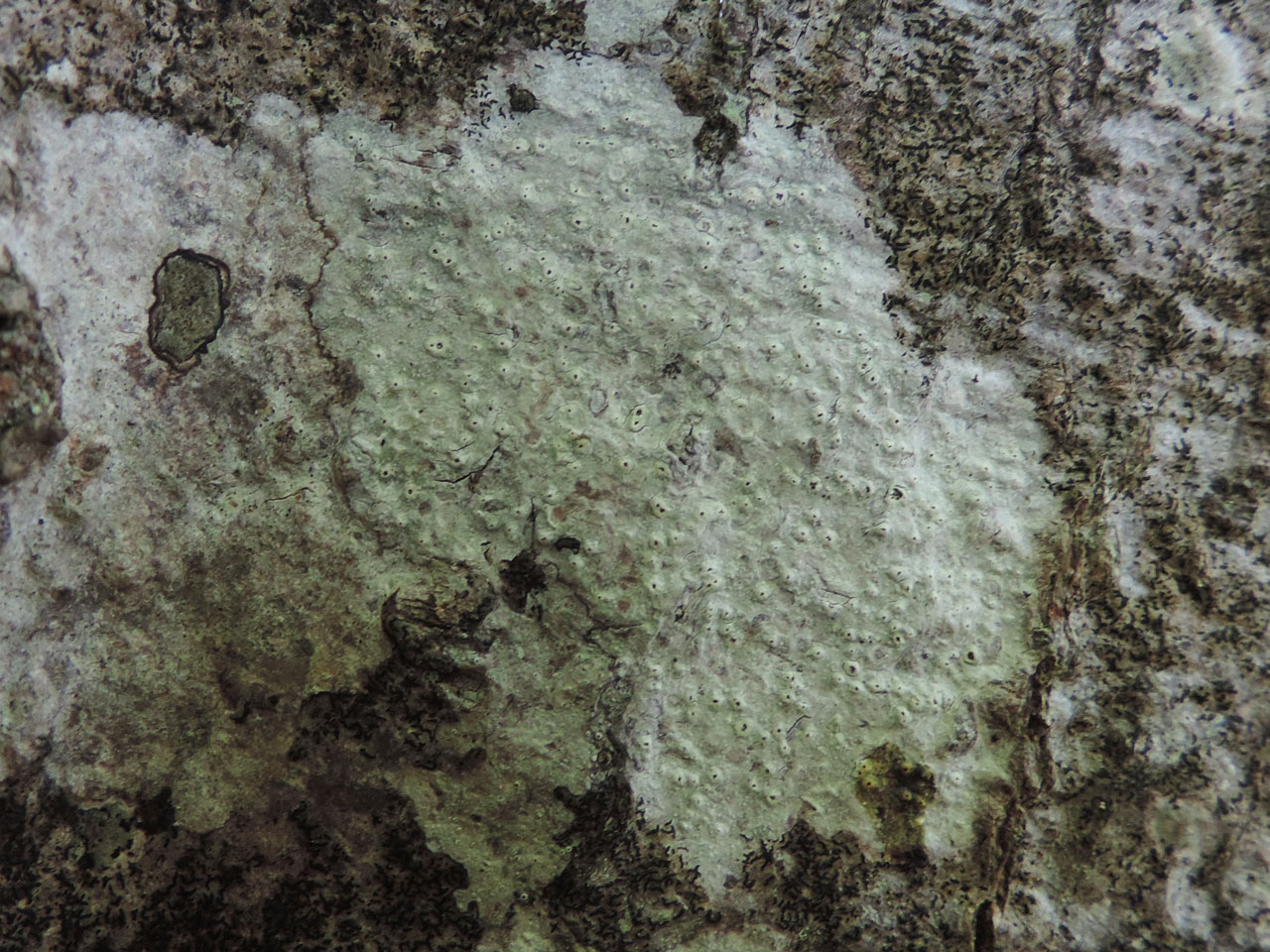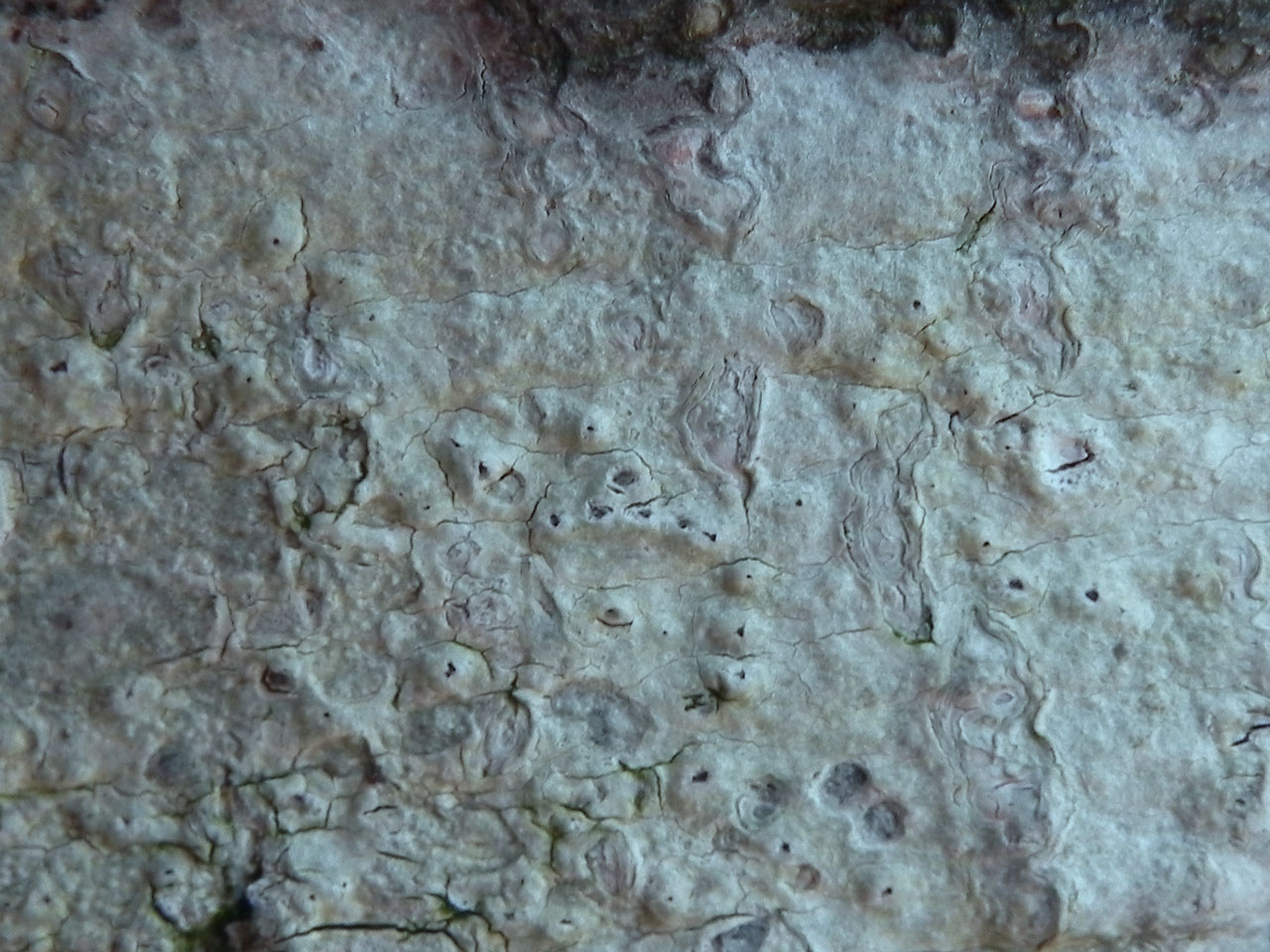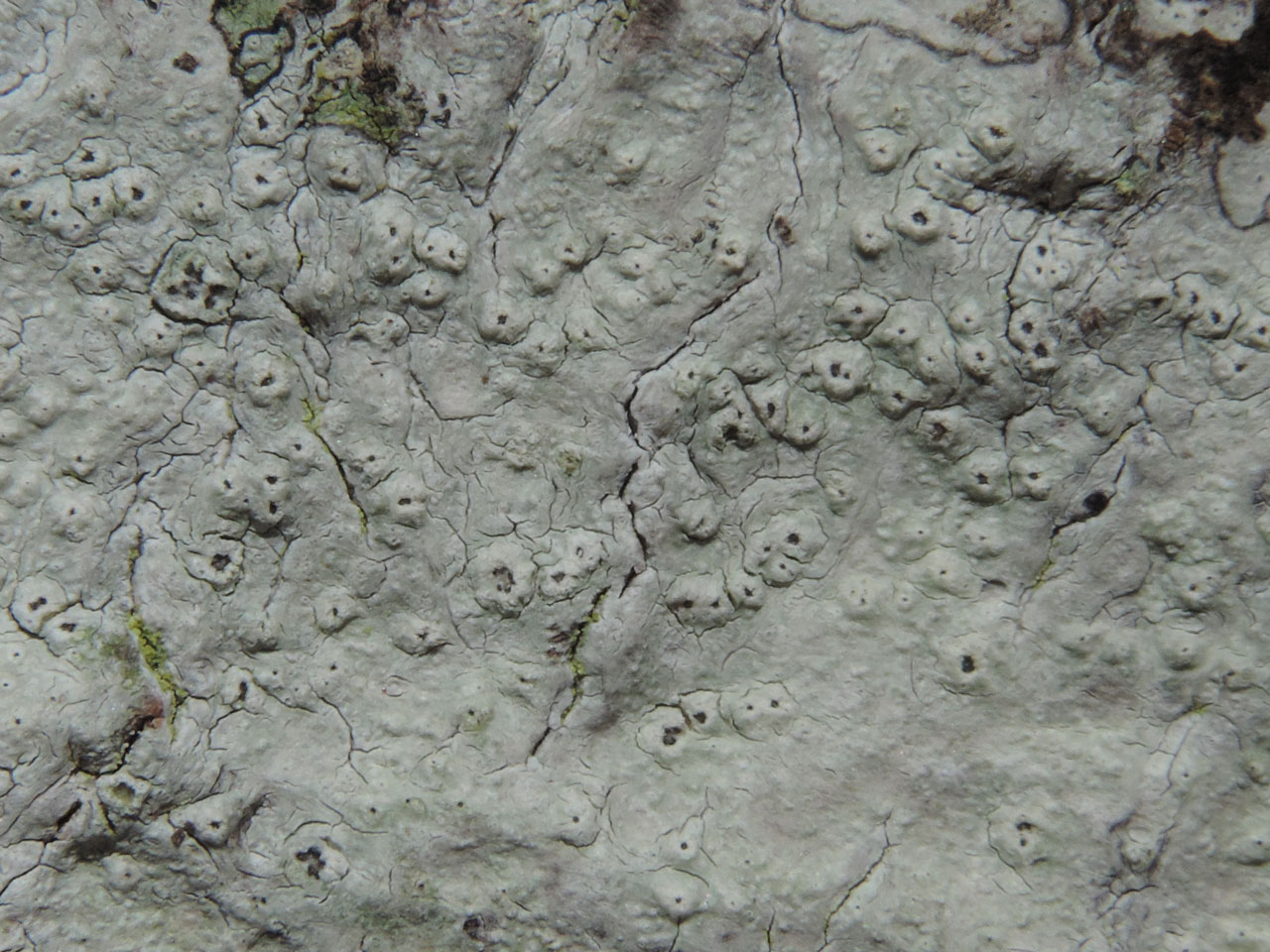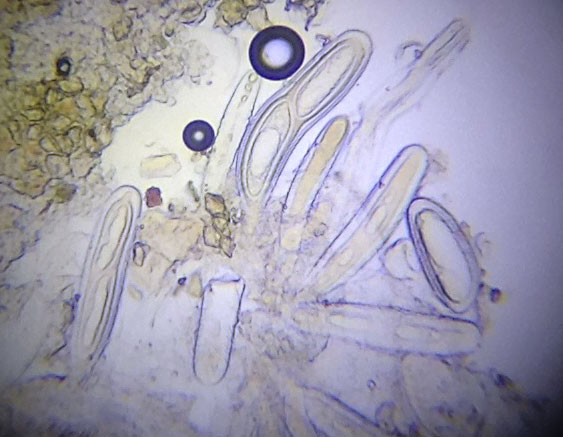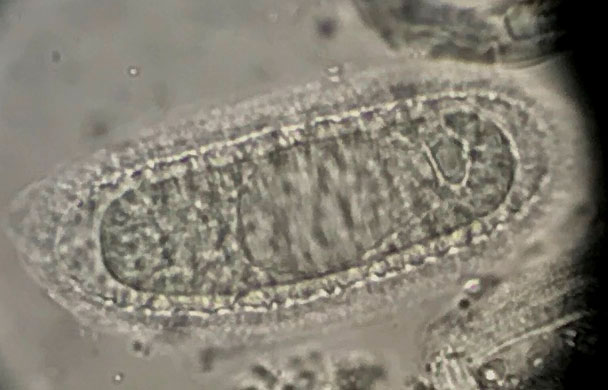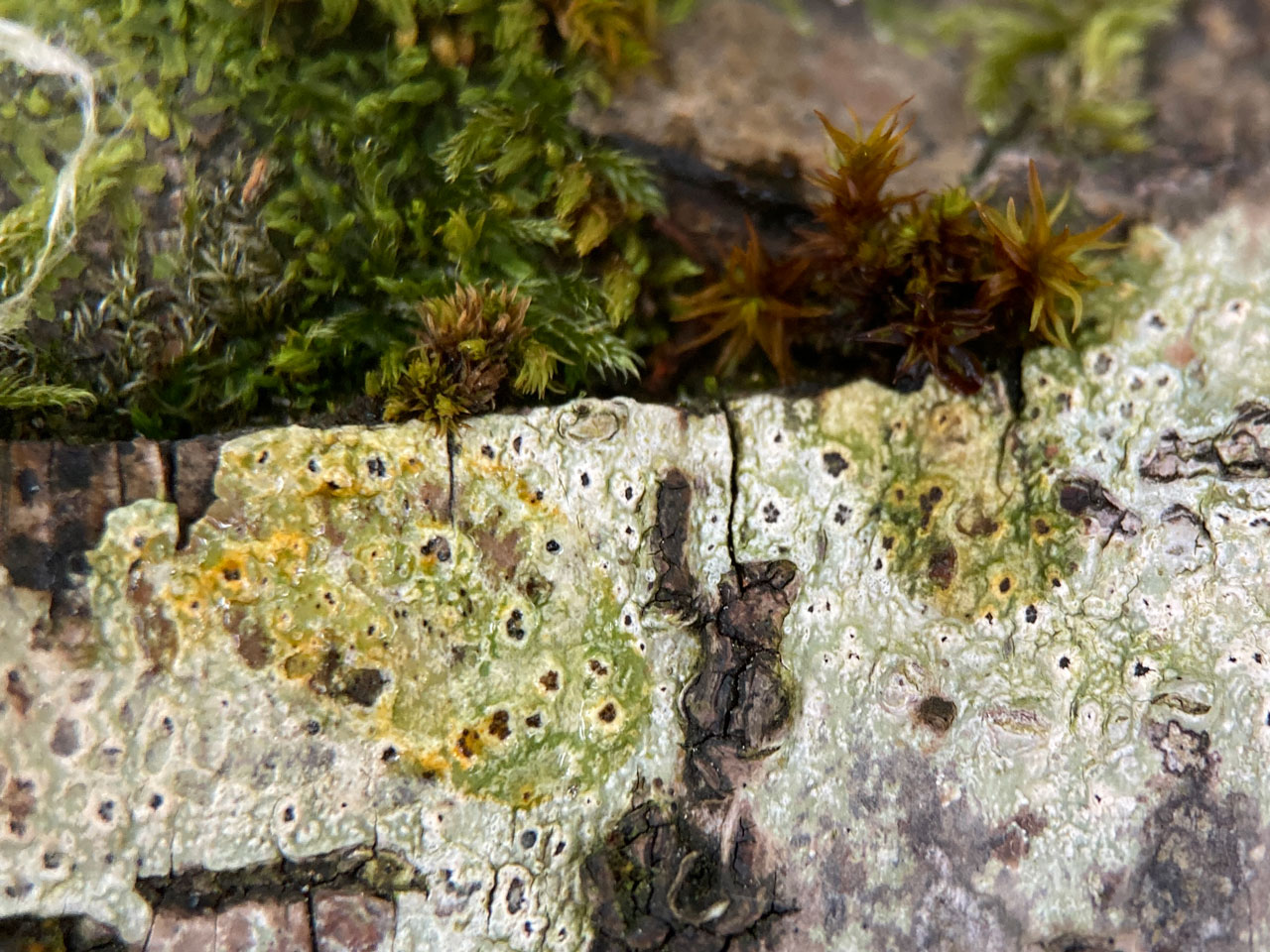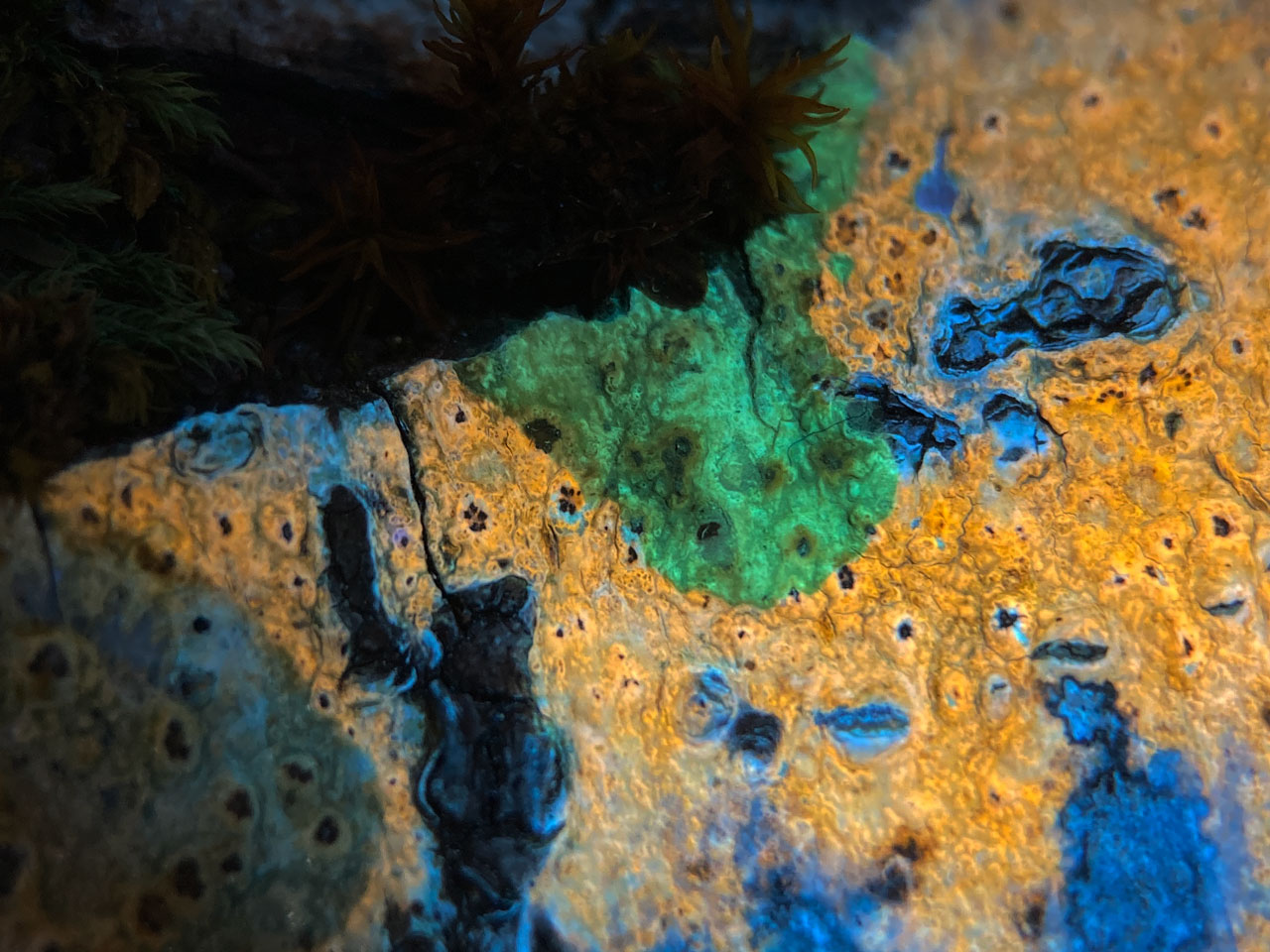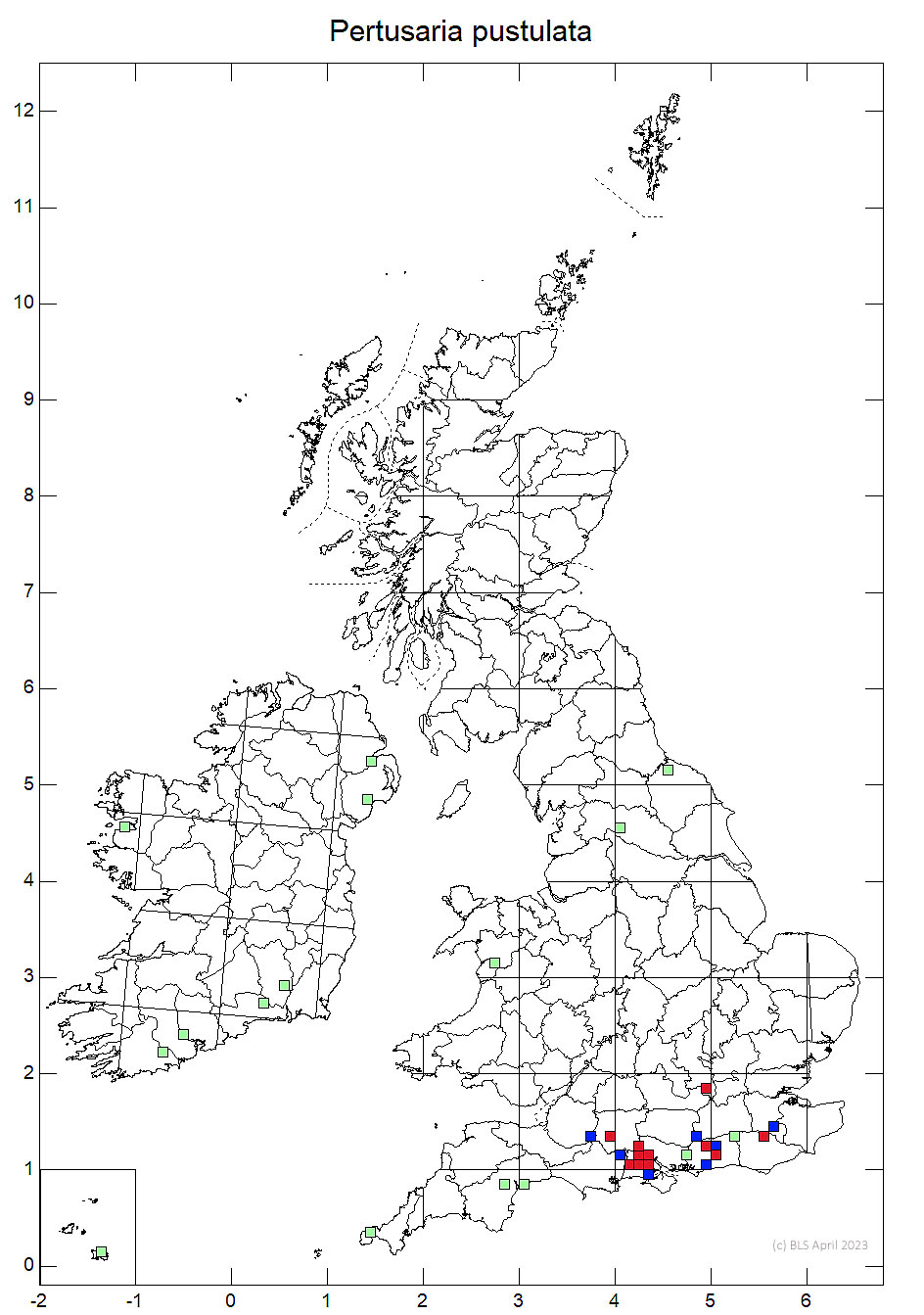Pertusaria pustulata
An epiphytic Pertusaria typically found on smooth bark of veteran Beech and Holly, but also recorded from other species and rarely on twigs. Rare and confined to southern England, but easily overlooked as Pertusaria leioplaca. The larger black pore on the apothecia wort, with an irregular torn margin is a good field character, with the combination of both K+ yellow and C+ yellow spot tests unique for an epiphytic Pertusaria species. The yellow-orange UV thallus fluorescence is also distinct from the pink-orange fluorescence of both Pertusaria leioplaca and Pertusaria hymenea. The asci with two large spores are a good final conformation (to see this clearly cut thick sections and squash, the asci are so large that they can be cut by thin sections).
Thallus thin, ± superficial; prothallus sometimes present, ± paler, unzoned at the margin; upper surface grey or pale greenish grey, rather smooth, even, becoming fissured when old. Fertile warts 0.5–1 mm diam., flat, expanded at the base; apothecia 1(-3) per wart; disc at first punctiform, later becoming expanded, black, surrounded by the torn margin of the warts. Asci 2-spored. Ascospores (39–) 80–125 (–140) × 20–40 (–45) μm, wall 1.5–3 μm thick, ± faintly ornamented, uniform. Thallus C+ yellow, K+ yellow, KC+ yellow, Pd+ yellow-orange to orange-red, UV± yellow-orange, K/UV+ bright yellow, while still wet (stictic acid, ± norstictic and ± constictic acids and a xanthone).
Characterised by the apothecia being surrounded by the torn, warted margin, the 2-spored asci and a distinct xanthone. P. hymenea is 8-spored and contains thiophaninic acid. The combination of the K+ yellow and C+ yellow reactions distinguishes this species from the similar P. leioplaca, which lacks the C+ spot test; however, the C+ spot test on P. pustulata can be patchy and confined to the fertile wart. The yellow-orange UV fluorescence is also distinct from the pink-orange fluorescence of both Pertusaria leioplaca and Pertusaria hymenea.
On smooth bark on trunks, especially in ancient woodlands, on old Beech and Holly, and rarely on other species, including Oak twigs in the New Forest.
Occasionally hosting Sphinctrina tubiformis, which in the New Forest at least is confined to this species, earlier records of this lichenicolous fungus from Pertusaria leioplaca being errors for Pertusaria pustulata.

Rare. S. England, but potentially over looked. Old records from Ireland are probably errors.
A rare southern Beech specialist, probably much reduced by past acidifying pollution, to which the hard bark of Beech is very susceptible. Surviving populations threatened by increasing shade within pasture woodlands. Recent conservation work at Ebernoe Common, reintroducing grazing and cutting young Holly has much improved conditions at Sussex population. It is however, certainly under recorded and should be looked for on veteran trees in areas recovering from pollution.
Britain: Vulnerable
Cannon, P., Chambers, S., Coppins, B., Sanderson, N. & Simkin, J. (2021). Pertusariales: Pertusariaceae, including the genus Pertusaria. Revisions of British and Irish Lichens 6: 1-12. Link
Text by Neil A Sanderson based on Cannon et al (2021)

